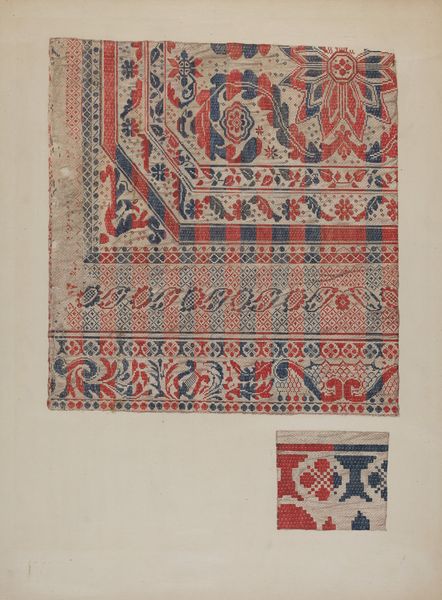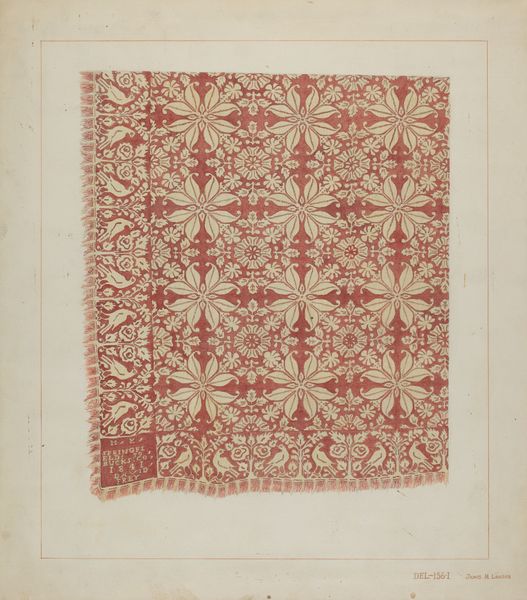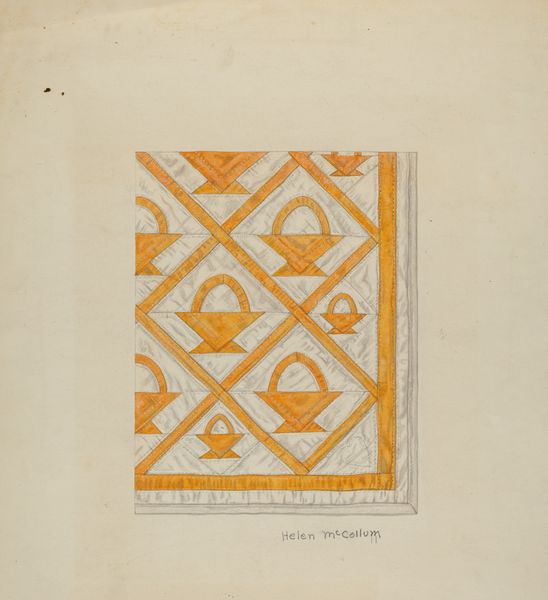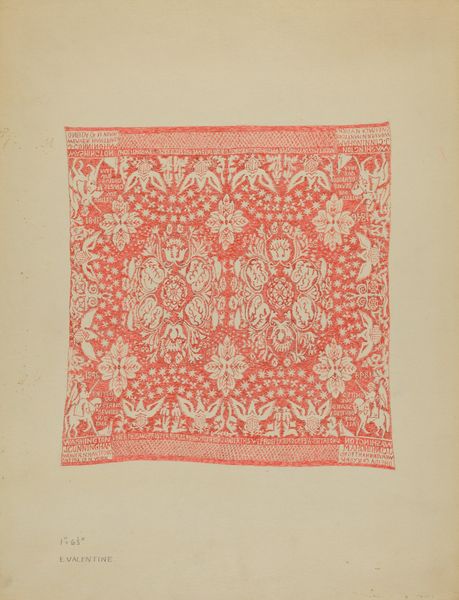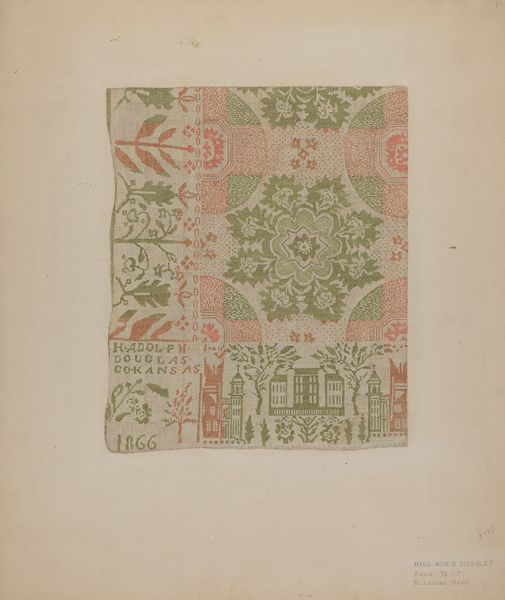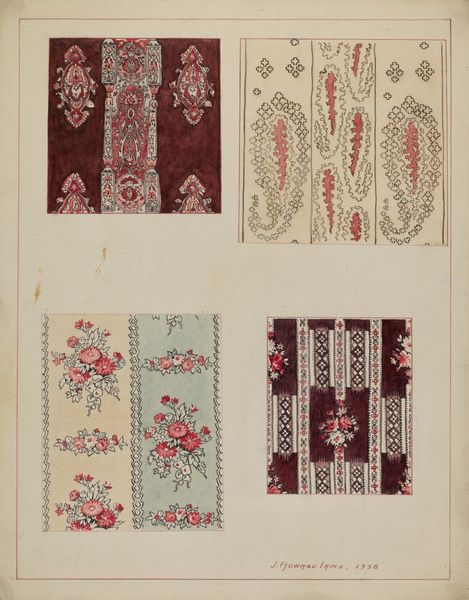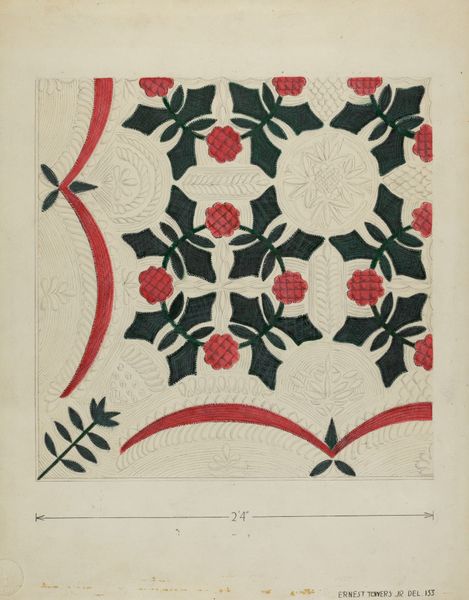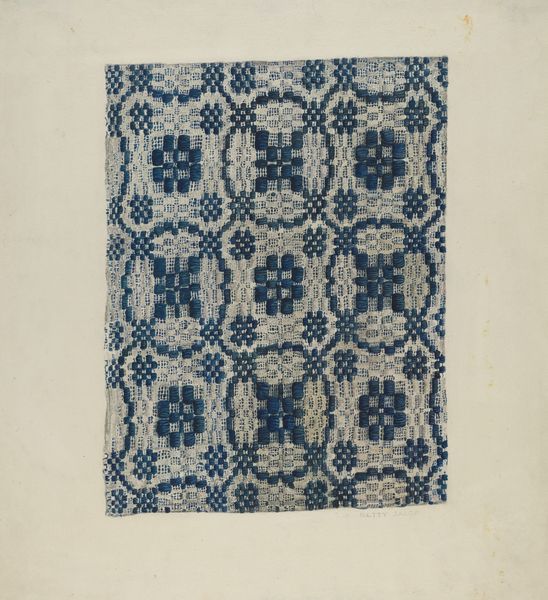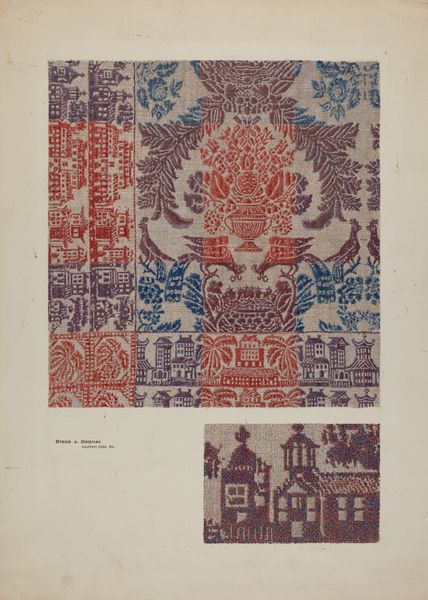
drawing, coloured-pencil, textile, watercolor
#
drawing
#
coloured-pencil
#
water colours
#
textile
#
watercolor
#
coloured pencil
#
folk-art
Dimensions: overall: 51 x 38.1 cm (20 1/16 x 15 in.) Original IAD Object: 81" wide; 101" long
Copyright: National Gallery of Art: CC0 1.0
Curator: Looking at "Quilt," created around 1941 by Betty Jacob, I'm immediately struck by the tactile illusion she's created on paper. It makes you want to reach out and feel the different textures and seams of the material. Editor: The subtle color palette gives it a calm, almost nostalgic feel, but I’m thinking of the social context, and the use of quilt-making within communities. It also prompts questions about how "domestic" crafts are undervalued when, in fact, quilt making as such requires immense skills. Curator: Absolutely, that quietness is compelling, isn't it? This image employs drawing and colored pencil, in a watercolor style on textile. Jacob captures this painstaking labor through deceptively simple marks. How do you feel about this, bearing in mind folk art tradition? Editor: Folk art brings to mind accessibility and democratization. Who gets to represent a people and from which position are key questions. It seems to speak to collective experience and traditions, but let's not overlook power dynamics. Who had access to these artistic expressions, and whose voices are muted? Curator: That’s so pertinent—I wonder, too, about the means of its construction. Consider the unseen labor invested in stitching that folks might overlook at first glance. A crucial detail easily missed is that this may be only a draft of a quilt not yet assembled; we only get access to the sketch. It raises critical questions about the perceived accessibility of folk art, questioning if we fully comprehend the labor behind art’s making. Editor: Precisely! By examining labor practices and highlighting its cultural capital in textile production, for instance, one has to delve into issues such as gender roles and expectations, questioning women’s limited sphere in those times. It is crucial, therefore, to resist the allure of that gentle colour palette! It invites dialogue about identity, heritage, but especially social hierarchies of gender and work. Curator: I think acknowledging how its visual and tactile properties invite scrutiny, to engage the socio-historical dimension, is where this piece becomes truly special. The contrast enhances our insights when focusing on materials versus cultural factors. Editor: Ultimately, analyzing “Quilt" is crucial if we want to encourage inclusive dialogue between different disciplines. Jacob's draft underscores the nexus of gendered work and folk tradition as well as material culture at large.
Comments
No comments
Be the first to comment and join the conversation on the ultimate creative platform.
